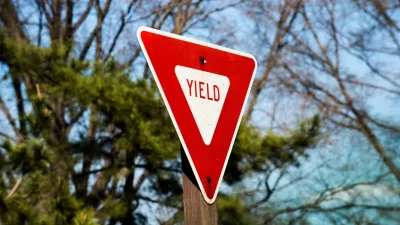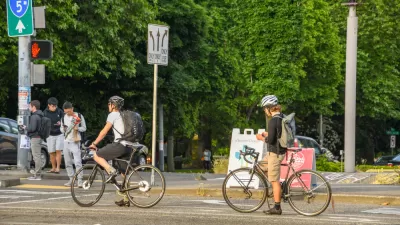Most states classify bicycles as "vehicles", and therefore bicyclists as "drivers" of vehicles. Practically what this means is: car rules are bike rules.
If bicyclists are so different from cars and pedestrians, why do the laws that apply to cars also apply to bikes? Well, mostly for good reason. Chaos would ensue if the rules governing bicyclist behavior differed radically from the rules governing cars. But, there are some car rules that really shouldn’t be bike rules, and there are some rules that are probably better suited for bikes.
Because here's the thing: biking is on the rise. Several reports indicate that the share of bike commuting is increasing, and the more we learn about emerging demographic preferences the more we should expect that increase to continue. We are entering an era where biking and walking are increasingly important parts of the overall transportation picture, but we’re behind when it comes to establishing the rules, norms, and etiquette that will help the different modes work together. Work together in ways that are safe for all, efficient for all, and pleasant for all.
So what can be done to increase bicycling and motoring accord? A few new rules might not hurt...
[See the rules by clicking through to the original story.]
FULL STORY: Bike Rules

Maui's Vacation Rental Debate Turns Ugly
Verbal attacks, misinformation campaigns and fistfights plague a high-stakes debate to convert thousands of vacation rentals into long-term housing.

Planetizen Federal Action Tracker
A weekly monitor of how Trump’s orders and actions are impacting planners and planning in America.

In Urban Planning, AI Prompting Could be the New Design Thinking
Creativity has long been key to great urban design. What if we see AI as our new creative partner?

Portland Raises Parking Fees to Pay for Street Maintenance
The city is struggling to bridge a massive budget gap at the Bureau of Transportation, which largely depleted its reserves during the Civd-19 pandemic.

Spokane Mayor Introduces Housing Reforms Package
Mayor Lisa Brown’s proposals include deferring or waiving some development fees to encourage more affordable housing development.

Houston Mayor Kills Another Bike Lane
The mayor rejected a proposed bike lane in the Montrose district in keeping with his pledge to maintain car lanes.
Urban Design for Planners 1: Software Tools
This six-course series explores essential urban design concepts using open source software and equips planners with the tools they need to participate fully in the urban design process.
Planning for Universal Design
Learn the tools for implementing Universal Design in planning regulations.
Gallatin County Department of Planning & Community Development
Heyer Gruel & Associates PA
JM Goldson LLC
City of Camden Redevelopment Agency
City of Astoria
Transportation Research & Education Center (TREC) at Portland State University
Jefferson Parish Government
Camden Redevelopment Agency
City of Claremont





























